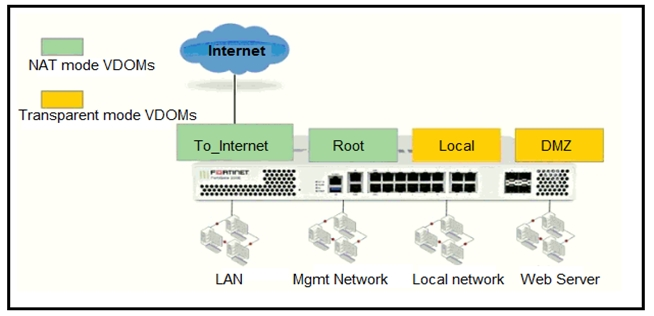Refer to the exhibit.

The Root and To_Internet VDOMs are configured in NAT mode. The DMZ and Local VDOMs are configured in transparent mode.
The Root VDOM is the management VDOM. The To_Internet VDOM allows LAN users to access the internet. The To_Internet VDOM is the only VDOM with internet access and is directly connected to ISP modem.
With this configuration, which statement is true?
- Inter-VDOM links are required to allow traffic between the Local and Root VDOMs.
- A default static route is not required on the To_Internet VDOM to allow LAN users to access the internet.
- Inter-VDOM links are required to allow traffic between the Local and DMZ VDOMs.
- Inter-VDOM links are not required between the Root and To_Internet VDOMs because the Root VDOM is used only as a management VDOM.
Answer(s): A
Reference:
https://kb.fortinet.com/kb/documentLink.do?externalID=FD46542